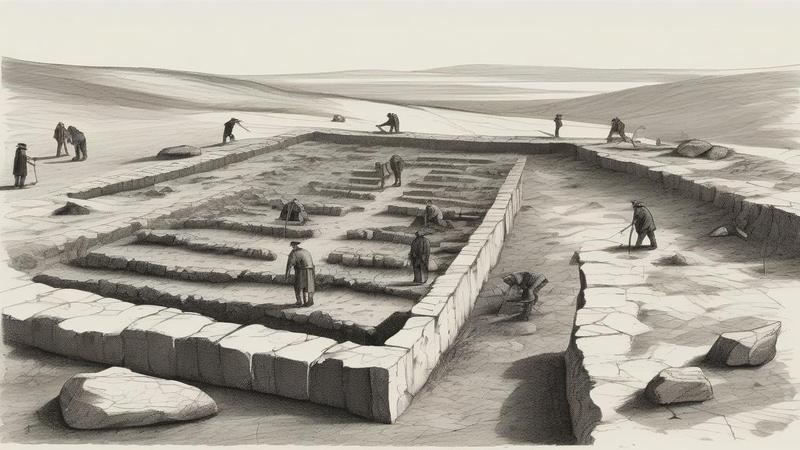Oldest Human Structure Found; Pyramids Suddenly Feeling Like Starter Homes

Archaeologists revealed the oldest human-made structure ever discovered, clocking in at least 23,000 years old, or roughly the age of a really determined glacier with a mortgage. The Pyramid of Khufu, upon hearing this, reportedly texted, “Wow, okay, guess I’m just decorative now.”
The site survived ice, wind, and prehistory’s worst roommates, thriving without a single building permit or inspirational moss wall. It was crafted by people who had never even heard the phrase “open concept,” and yet still managed to outlast entire civilizations and three different kinds of yogurt.
Experts say it might be a shelter, a ceremonial space, or history’s first “Look What I Can Stack” contest entry. The structure is complex enough to suggest planning, teamwork, and at least one person who kept saying, “Trust the vision,” while pointing at rocks.
Textbooks are reportedly getting a new chapter titled, “Wait, They Did What, When.” Diagrams will be updated to include more arrows, more question marks, and a footnote that reads, “Archaeology: because time travel is illegal.”
Cultural commentators called it “a paradigm shift,” while real estate agents called it “impossibly quaint with terrific bones and an absolutely savage commute.” A nearby museum has already asked if the hunter-gatherers would consider a naming-rights deal if they can reach them via séance.
Field scientists immediately requested more funding and an extra weekend, then reached for their portable radiocarbon sampling kit. You know something is serious when everyone on-site says, “No one breathe,” and it’s not about the smell but the timeline.

Meanwhile, the research team analyzed tool marks that suggest specialized labor and a project manager who likely invented the first punch list, also known as “Grunts, but Make Them Sequential.” Imagine a committee meeting conducted entirely with nods and pointed sticks, and still more productive than your inbox.
Predictably, influencers are pivoting to Prehistoric Chic: “Welcome to my cave; today we’re installing DIY megalith garden stones and a mammoth-hide reading nook you can totally recreate with synthetic materials, survivor’s guilt, and patience.” The comments are just fire emojis and one archaeologist weeping.
Climate historians note the structure endured multiple cold snaps, warm spells, and at least one saber-toothed landlord. Your open-plan kitchen will not survive a Tuesday with that résumé, but bless its little island.
The Pyramid of Khufu, now comparatively spry at 4,500 years old, issued a press release: “Age is just a number, unless you’re sandstone.” Sphinx declined to comment, still processing the phrase “three times older” like it’s a riddle with dental implications.
As ever, scientists caution restraint. The site is a message from people who solved problems we can barely identify, while we struggle to assemble a folding chair. Somewhere between the layers of silt, you can hear a whisper: Plan, adapt, and don’t brag until you’ve outlived a glacier.
In conclusion, humanity’s oldest structure has one piece of advice for modern architecture: stop chasing skylines; start chasing millennia. Also, the HOA fines for leaving mammoth bones on the lawn were ruinous—23,000 years later, we still can’t get our deposit back.
